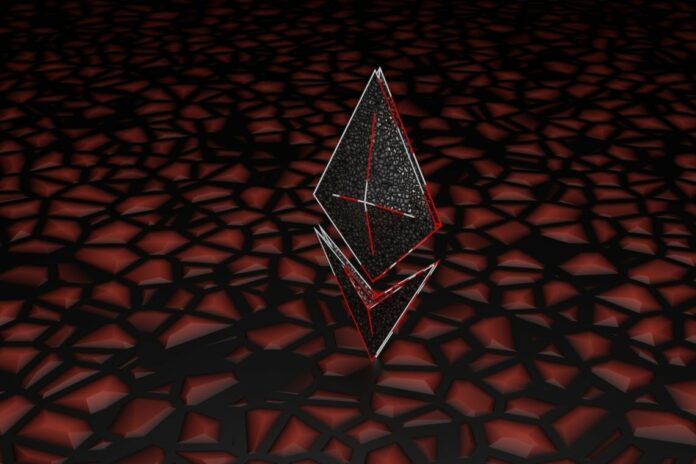Initially the solution that was envisioned to solve the scalability problems of the Ethereum blockchain was sharding.
Sharding involves parallel processing of processes and transactions, allowing data to be distributed by making nodes easier to manage. Currently, however, all processes are processed by all nodes, and all transactions are entered into the single blockchain, block by block.
With sharding, on the other hand, the network could process multiple blocks of transactions simultaneously, distributing the work across several nodes that would operate in parallel, not in unison.
Although this is all still on the agenda, what is emerging is that such a solution could in fact be largely replaced by rollups.
Summary
Rollups as a solution to the scalability of the Ethereum blockchain
In fact, over time, what is emerging as an alternative is that of so-called danksharding, which is a new system that will allow rollups to add data to the blockchain.
Danksharding will bring huge amounts of free and usable space on the Ethereum blockchain for rollups. These will process off-chain transactions, and only enter the end result of what are called compressed transactions onto the blockchain.
With danksharding it will be possible to send and attach blobs to blocks. The data in the BLOBs will not be accessible to the EVM (Ethereum Virtual Machine), and they are automatically deleted after a certain period of time (1 to 3 months). This allows rollups to send much less data to the blockchain, significantly more economically.
EIP-4844
In order to get to all this, updates to the Ethereum protocol need to be introduced.
It all revolves around the EIP-4844 proposal, not coincidentally called “Shard Blob Transactions.”
It is a proposal also drafted by, among others, Ethereum co-founder Vitalik Buterin himself, and published in February last year.
EIP-4844, if approved, would introduce the new format for transactions that carry blobs, i.e., that contain a large amount of data that cannot be accessed through EVM execution.
However, this format will be fully compatible with the one that will be used for actual sharding.
Actually, EIP-4844 will not introduce danksharding, but what is called proto-danksharding, i.e., the first steps to get to danksharding.
It seems possible that EIP-4844 may arrive relatively soon, while getting to full danksharding will have to wait several more years. Real sharding will probably come even later.
The problem of scalability
That of scalability is a real issue.
There are two issues.
The first, trivially, is the speed of transaction execution. Although it is currently only a few seconds, some uses would require much faster transactions, on the order of hundredths or even thousandths of a second, such as for trading on decentralized exchanges.
It is extremely difficult to imagine that Ethereum could achieve such performance by executing all transactions on all nodes, so solutions such as rollups that execute some off-chain processes are needed.
The second, and much more important, is the cost of transactions, or gas (the fees).
Currently on average a transaction on the Ethereum blockchain costs just under $4, while for example on the Bitcoin blockchain the average fee stops at just over $2.
With such costs, it is impossible to imagine being able to support even so-called microtransactions, so much so that an off-chain solution (Lightning Network) has been developed for Bitcoin that lowers them to a few thousandths of a dollar by simply avoiding writing some transactions on-chain.
While on-chain solutions to the fee problem were initially conceived for Ethereum, now off-chain solutions, such as rollups, are also being targeted within this network.
Although rollups still publish the end result on-chain, they do not publish the intermediate steps, and when it comes to multiple transactions that are compressed into one, the end result is just to publish only the bare minimum on blockchain.
The future goal of the Ethereum blockchain
Since only a certain volume of data per block can be recorded on the blockchain, there are insurmountable limits that prevent growth, or drive up recording costs.
The goal then is to increase the number of recordable transactions as much as possible without significantly increasing the volume of data to be recorded on the blockchain.
It is estimated that even with proto-danksharding alone, which should be introduced relatively soon, the theoretical number of transactions capable of being executed by the Ethereum network would rise to one hundred thousand per second (100,000 TpS). All this is done by avoiding writing all the data on-chain, and executing most of the processes off-chain.
For quite some time now, an average of about one million transactions per day, or just over 11.5 per second, have been recorded on the Ethereum blockchain. The all-time high occurred on 9 December 2022, with 1.9 million transactions per day. In other words, currently on-chain cannot record more than 25 transactions per second.
Future goals therefore are still extremely distant, and cannot be achieved except by moving much of the work off-chain.
Rollups are to date the fastest way to ramp up those 11.5 average transactions per second so as to begin the long road to 100,000 TpS.




